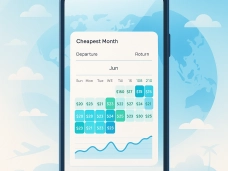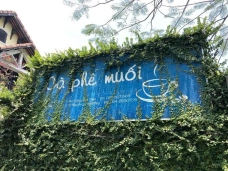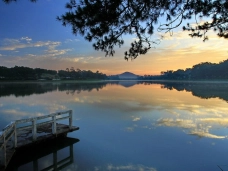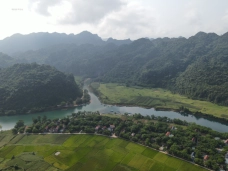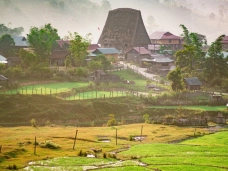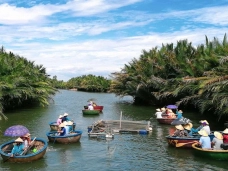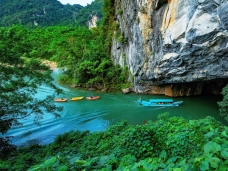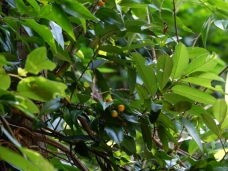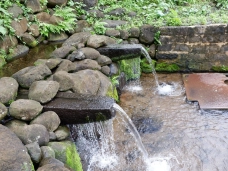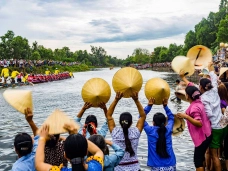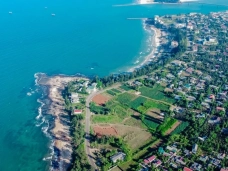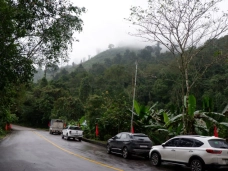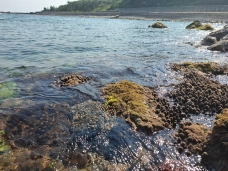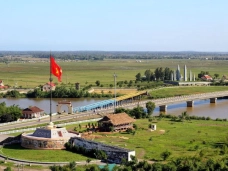A Taste of Seasons in Đồng Hới: Savoring the City’s Charm and Street Eats
13-11-2024 00:00
Main contents
- 1. What to see – Slow, soulful Đồng Hới
- 1.1. Nhật Lệ Beach – “Tears of the Sun”
- 1.2. Quang Phú Sand Dune – Sand, sea & adrenaline
- 1.3. Tam Toa Church Ruin – A postcard from wartime
- 1.4. Quảng Bình Gate – Where Vietnam once split in two
- 1.5. Đồng Hới Citadel – Quiet park, big history
- 1.6. Đồng Hới Market – Where the city wakes up
- 1.7. Quảng Bình Museum – A one-stop intro to the province
- 1.8. Mẹ Suốt Monument – Quiet courage by the river
- 2. What to eat – A small town with big flavours
In Đồng Hới, every season tells a different story. On rainy days, mist hangs over the Nhật Lệ River like soft watercolor, the city slowing into a calm, dreamy mood. In the dry season, Đồng Hới switches to technicolor: golden light on sandy shores, blue skies, and the scent of grilled snacks drifting from street stalls.
Whichever season you come in, two things always stand out: the easy-going rhythm of this small coastal town – and the food. From silky bánh bèo and chewy bánh bột lọc to crispy bánh khoái and comforting bowls of cháo bánh canh, Đồng Hới is the perfect place to slow down, explore by bike, and eat like a local.
What to see – Slow, soulful Đồng Hới
Nhật Lệ Beach – “Tears of the Sun”
If you see only one place in Đồng Hới, make it Nhật Lệ Beach. Long, quiet and blissfully underdeveloped, it feels like the Vietnam coast before the crowds arrived.
At sunrise, the beach is almost empty: soft pastel skies, fishermen pulling in their nets, and just the sound of waves. In the late afternoon, it turns social – plastic chairs in the sand, cold beers, grilled seafood and families playing by the water.
The name “Nhật Lệ” poetically means “Tears of the Sun”, born from old stories of people separated by war, looking out to sea with longing. Today, it’s the perfect place to slow down, breathe and let the city’s easy rhythm sink in.

Quang Phú Sand Dune – Sand, sea & adrenaline
Just 10 km northeast of town, Quang Phú Sand Dune is where rolling golden sand meets the deep blue of the East Sea. From the ridge line, you get a panoramic view that feels more Sahara-meets-ocean than central Vietnam.
Then comes the fun part: sandboarding. Rent a board, climb up, and slide down laughing – it’s simple, goofy, and ridiculously photogenic.
Don’t miss:
-
Go 5:00–8:00 AM or 4:00–6:00 PM for cooler temperatures and the best light
-
Sunglasses, sunscreen and closed shoes are your best friends here
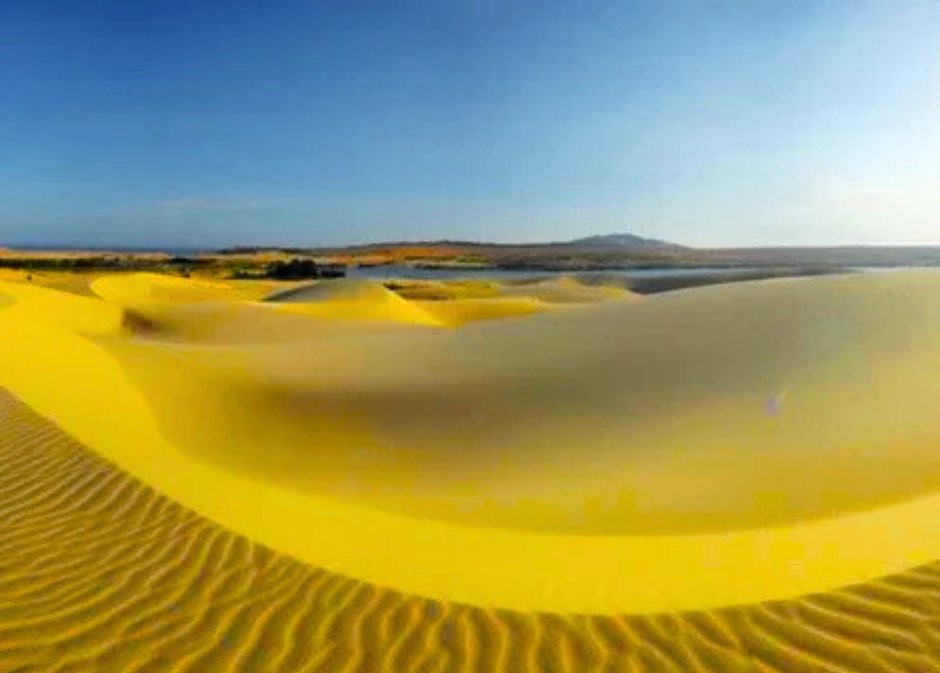
Tam Toa Church Ruin – A postcard from wartime
Tam Toa was once a graceful Portuguese-Gothic church (1887) by the river. Bombed during the Vietnam War, it now survives as a broken façade and bell tower – a minimalist but powerful monument.
There’s not much to “do” here, and that’s the point: you stand, you look, you imagine the full church that once stood, and the lives that passed through it. Pair it with a short riverside walk and a coffee, and you’ve got a surprisingly moving little stop.

Quảng Bình Gate – Where Vietnam once split in two
Quảng Bình Gate is a compact stone gate with a huge story. It’s one of the last remains of the Đào Duy Từ Wall, built in the 17th century when Vietnam was split between the Trịnh and Nguyễn lords.
Today it’s a small, photogenic landmark surrounded by everyday life: kids on bikes, vendors, locals chatting in the shade. It’s a great reminder that this sleepy town once sat on a front line in Vietnamese history.
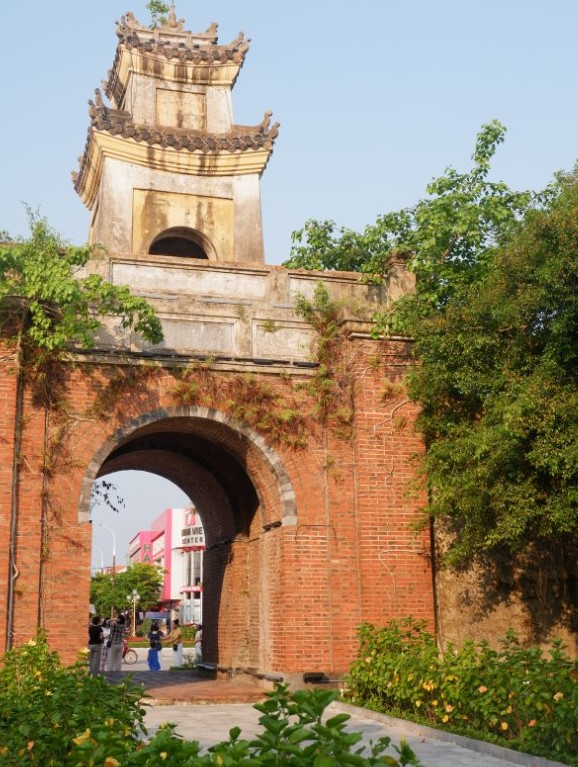
Đồng Hới Citadel – Quiet park, big history
Built in the early 1800s and later rebuilt using Vauban-style design, Đồng Hới Citadel used to be a serious fortress of moats and bastions. Now, only parts of the wall and gates remain, wrapped in trees and walking paths.
Come for a short stroll, sit on a bench, watch local life, and imagine the years when this relaxed riverside town was a key strategic point.
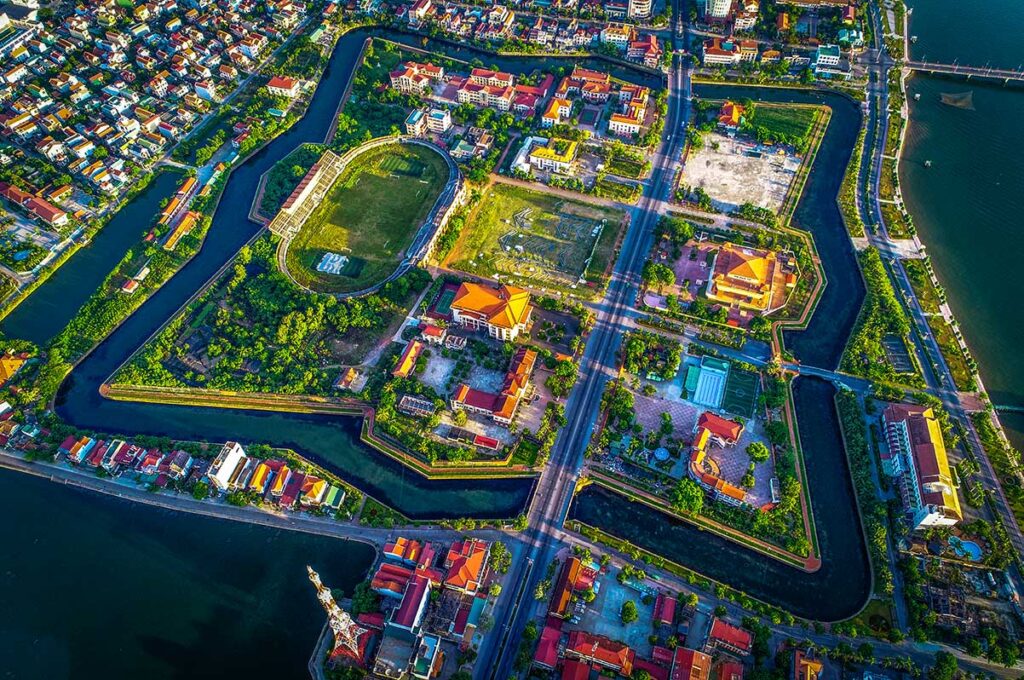
Đồng Hới Market – Where the city wakes up
Love local markets? Đồng Hới’s morning market is one of the best ways to feel the city’s pulse. Picture piles of fresh fish and squid, baskets of herbs and chillies, and motorbikes weaving through it all.
Grab a simple breakfast, practice a few phrases of Vietnamese, and take photos (respectfully) as the sun rises over the river. It’s chaotic in the best way.
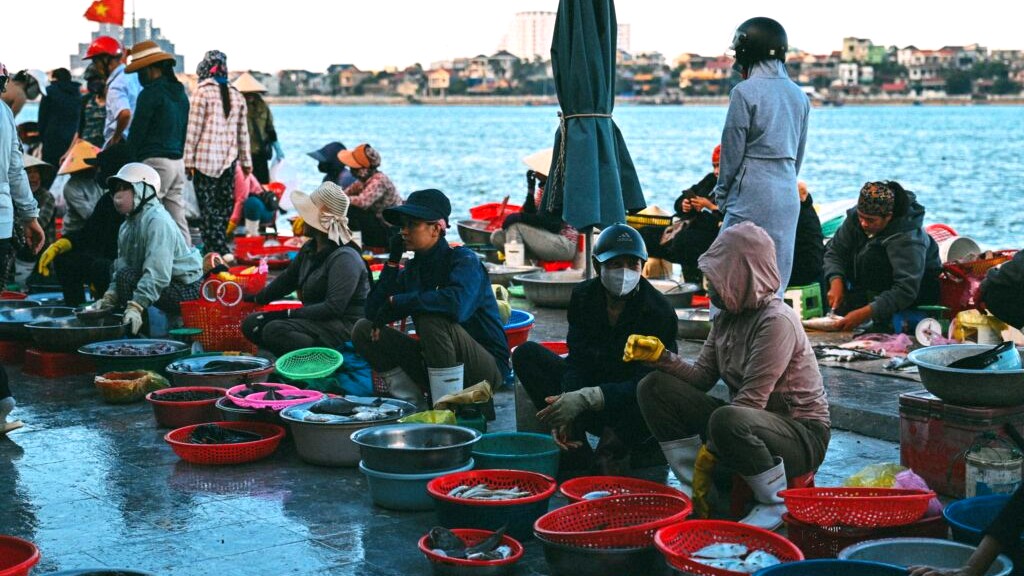
Quảng Bình Museum – A one-stop intro to the province
If you like context, start here. Quảng Bình Museum offers a compact journey through:
-
The province’s caves, rivers and coastline
-
Local ethnic cultures and Champa traces
-
The French and American wars
-
Reconstruction after 1975
In an hour or two you’ll understand why this small province feels so intense: giant caves, heavy history, and an incredibly resilient population.

Mẹ Suốt Monument – Quiet courage by the river
On the Nhật Lệ riverfront stands the statue of Mẹ Suốt, a local heroine who rowed soldiers and supplies across the river under bombing raids.
Come at sunset: the light softens, the river turns gold, and the monument makes quiet sense. No big museum, no long text – just a simple, powerful tribute to everyday bravery.

What to eat – A small town with big flavours
Đồng Hới doesn’t shout about its food – but it really should. This is the kind of place where the best dishes are cooked in tiny home kitchens, served on plastic stools, and remembered long after you’ve left.
Bánh Lọc – The chewy little legend
If Đồng Hới had a signature snack, bánh lọc would be it. These clear tapioca dumplings are small, chewy and addictive, filled with shrimp and pork (or mung bean) and dipped in light fish sauce.
You’ll see them wrapped in banana leaves (more fragrant) or unwrapped and translucent (prettier for photos).
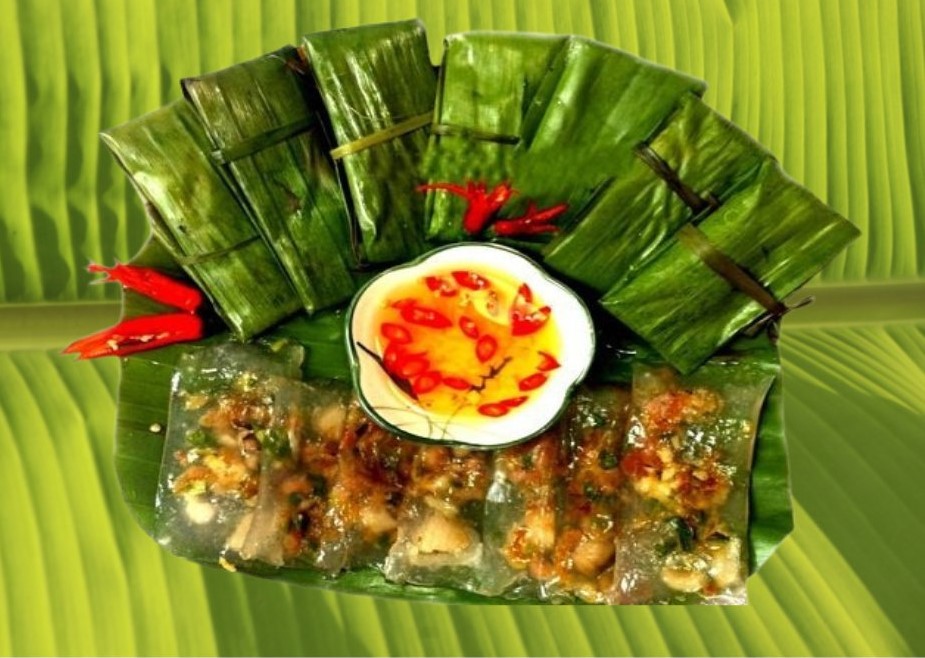
Where to try:
-
Hương Hoài – 17 Lê Thanh Đồng Street
Cháo Bánh Canh – The local breakfast bowl
Think of cháo bánh canh as Vietnam’s answer to comfort food: thick, slightly sticky rice noodles in a rich broth, topped with fish, crab, shrimp, egg or pork. It’s warm, filling and exactly what locals eat to start the day.
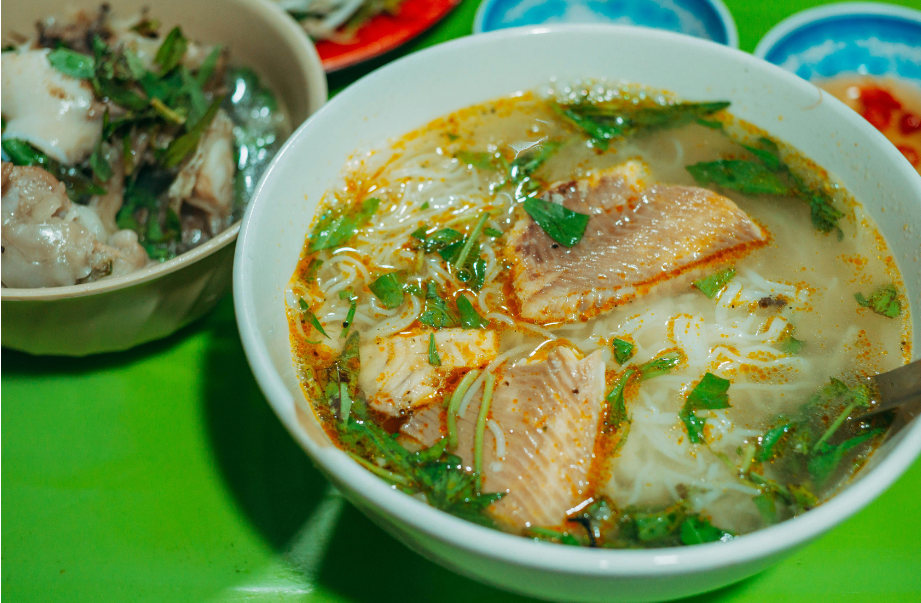
Where to try:
-
O Hạnh – 04 Lê Thanh Đồng Street
-
Bà Hồng – 51 Nguyễn Hữu Cảnh Street
-
Mệ Luốc – 238 Lý Thái Tổ Street
-
Quán 75 – 01 Lê Quý Đôn Street
Grab a bowl, sit shoulder-to-shoulder with locals, and watch the morning unfold.
Bánh Bèo – Tiny bowls, big flavour
These little steamed rice cakes come in mini dishes, topped with minced shrimp and crispy bits, then drenched in a gentle, slightly sweet fish sauce made from shrimp broth. Light enough to snack on, tasty enough to order a second round.
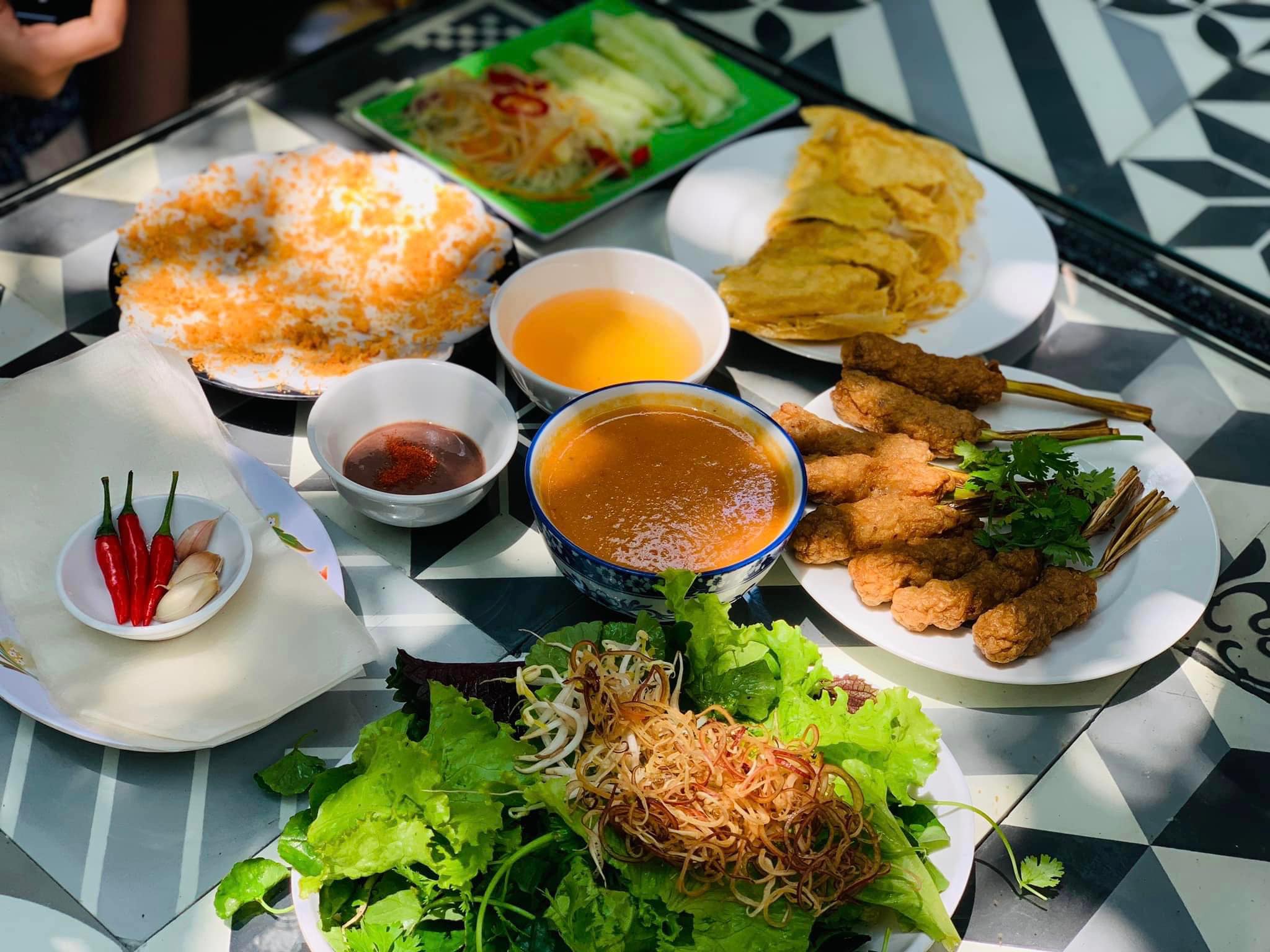
Where to try:
-
Bánh bèo Dì Tiếp – 29 Lê Thanh Đồng Street
-
Bánh bèo Cô Vân – 80 Lê Thanh Đồng Street
-
Bánh bèo Anh Đào – 11/15A Street
Bánh Khoái – Crispy, messy, unforgettable
Smaller, thicker and crunchier than bánh xèo, bánh khoái is a golden rice-flour pancake stuffed with shrimp, pork and bean sprouts. You wrap pieces in herbs and greens, then dunk them in a rich sauce made from pork liver, peanuts and spices.
It’s a little messy, very hands-on, and seriously memorable – the kind of dish you’ll talk about when you get home.
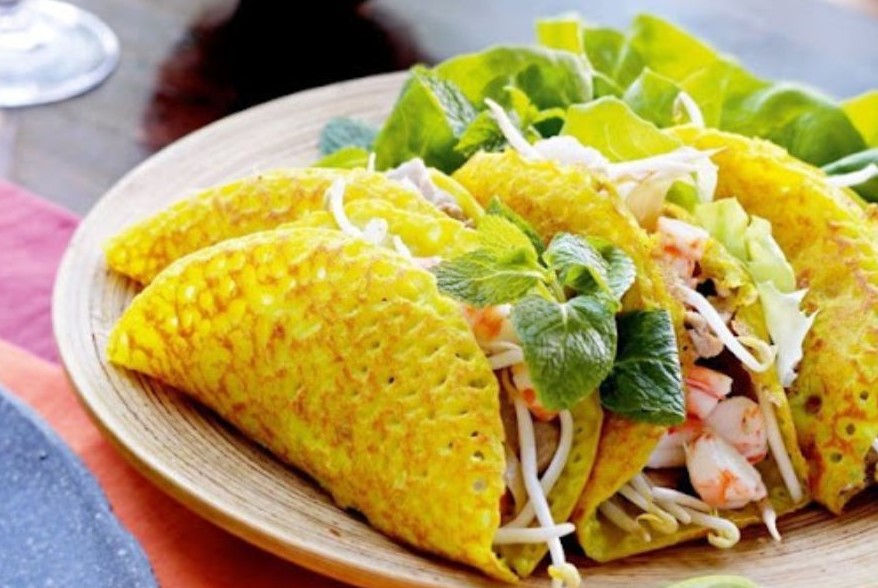
Where to try:
-
Quán Cô Năm – 13 Trần Hưng Đạo Street
-
Quán Ly Ly – 11A Cô Tám Street
-
Bánh khoái Tứ Quý – 17 Cô Tám Street
-
Quán Thùy Phương – 09 Cô Tám Street
Foodie tip:
Đồng Hới is small – you can easily do a DIY food crawl by bike:
start with cháo bánh canh for breakfast, snack on bánh bèo and bánh lọc in the afternoon, and finish with bánh khoái and a beer by the river.
Plan your Đồng Hới city tour with Phong Nha Việt
Công ty Du lịch & Tư vấn Phong Nha Việt
📍 46 Bà Triệu, Đồng Phú, Đồng Hới, Quảng Bình
🌐 Website: https://phongnhaviet.com/
📞 Hotline / WhatsApp: 0911 367 789
Comments
Comments (Total 0)
Related Articles
26-11-2025
Khe Sanh – A Journey into Memory
05-11-2025
8 Unmissable Instagram Spots in Da Lat
28-10-2025
Beneath the Arch of Scarlet Blossoms
31-07-2025
Son Tra Awaits
30-04-2025


